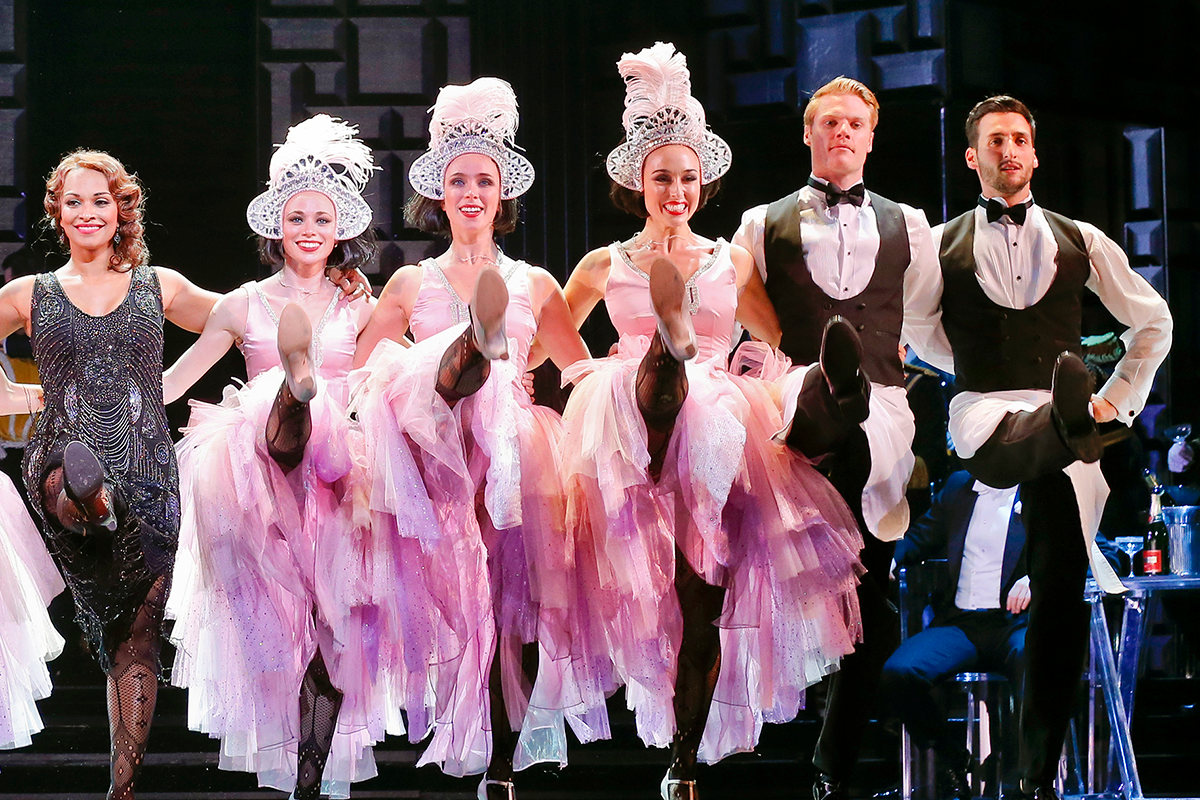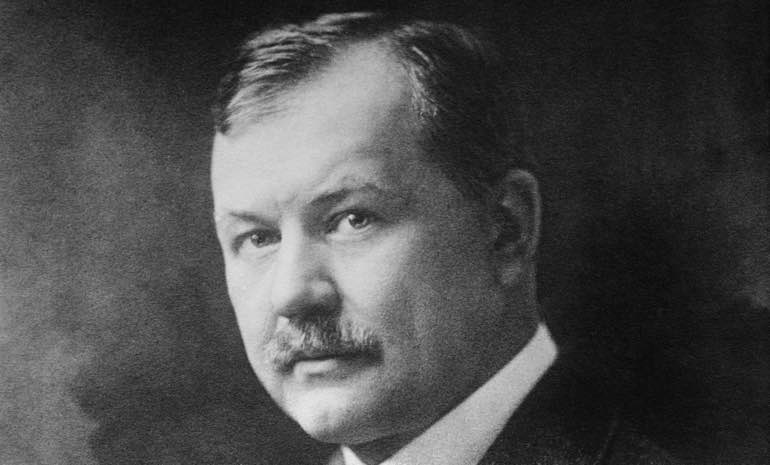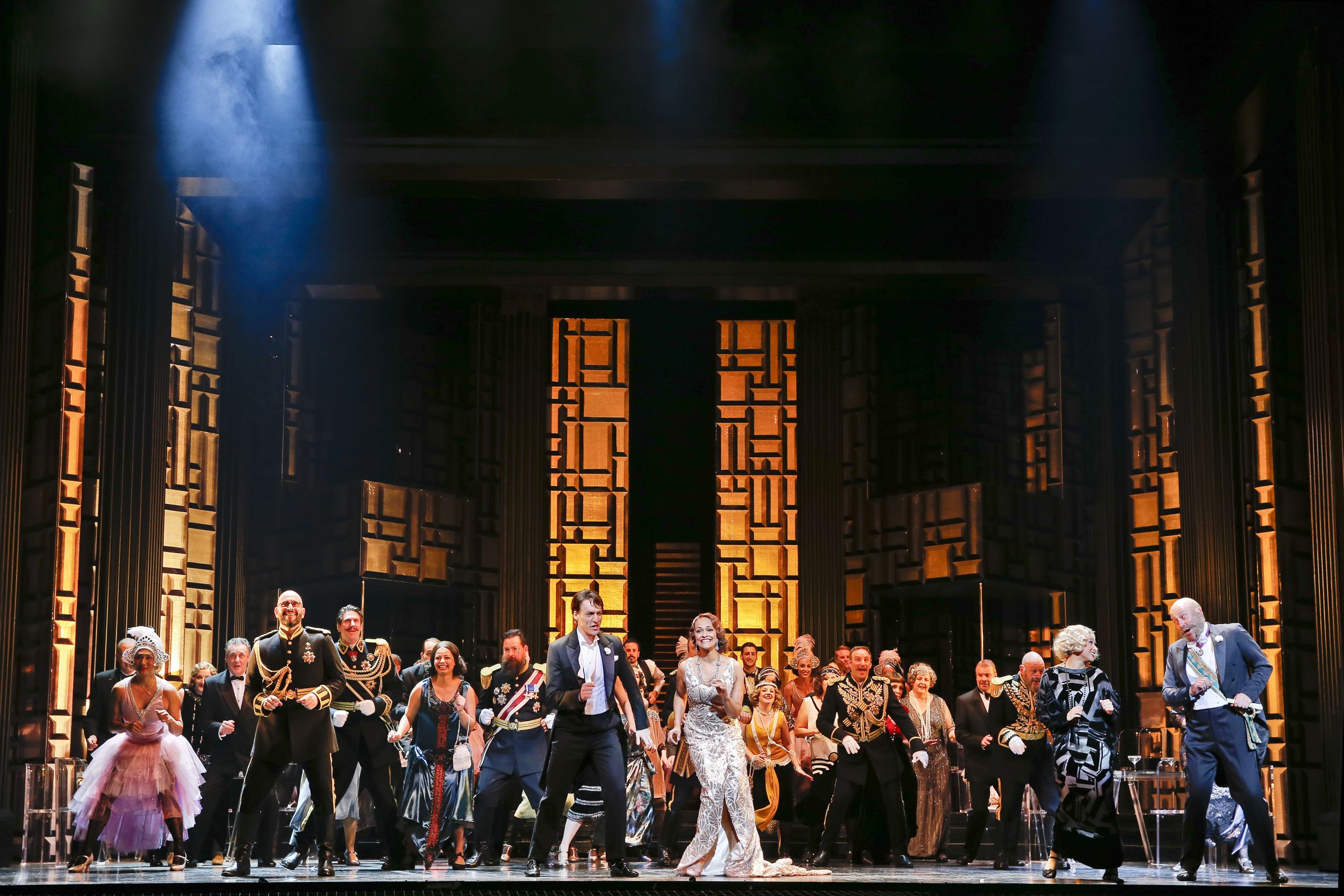Cheat Sheet: The Merry Widow
All you need to know about Lehár's opulent operetta

What happens in the story?
The tiny state of Pontevedro is bankrupt. Their only hope of financial salvation lies in Hanna, a beautiful widow who inherited her husband's fortune. The Pontevedrians must convince her to marry a local, lest she take her fortune to foreign shores.
But she's got a history with the man they've got in mind, and there are many twists and turns on the road to falling in love again...
Danielle de Niese in The Merry Widow at Arts Centre Melbourne (2017). Photo: Jeff Busby.
Danielle de Niese in The Merry Widow at Arts Centre Melbourne (2017). Photo: Jeff Busby.
What's the music like?
Bubbly, beautiful and full of tunes you’ll be humming as you leave the theatre.
Lehár packed his score with dance tunes, from his famous waltz to marches, cancans, gallops and a polonaise. His score is more sophisticated than many operettas, which often pair the melody with a simple orchestral accompaniment. Lehár filled out his orchestration with colour and harmony — the sound is rich and full.
Listen out for eastern European folk tunes that set a Balkan scene for Pontevedro.
What's the big hit?
'Vilja', closely followed by the famous waltz.

Danielle de Niese in The Merry Widow at Arts Centre Melbourne 2017. Photo: Jeff Busby.
Danielle de Niese in The Merry Widow at Arts Centre Melbourne 2017. Photo: Jeff Busby.
This production is...
A glitzy, glamorous good time. Graeme Murphy waltzed his way through many a production of The Merry Widow for the Australian Ballet, and now turns his renown as a director and choreographer to the operetta itself.
Murphy brings the action forward just a little, from the turn of the century to art deco Paris of the 1920s. It’s a dream canvas for the design team: Michael Scott-Mitchell’s dramatic sets feature faceted mirrors, geometric screens and a stunning Monet-inspired night garden.
Jennifer Irwin’s costume designs include elaborate braided dress uniforms for the men and elegant shapes with stunning embroidery, feathers and prints for the women. Lighting designer Damien Cooper creates a shimmering world for Hanna and her admirers to play in.





Jennifer Irwin's costume design
Jennifer Irwin's costume design

Jennifer Irwin's costume design
Jennifer Irwin's costume design

Danielle de Niese in The Merry Widow at Arts Centre Melbourne (2017). Photo: Jeff Busby.
Danielle de Niese in The Merry Widow at Arts Centre Melbourne (2017). Photo: Jeff Busby.

Dancers in The Merry Widow at Arts Centre Melbourne (2017). Photo: Jeff Busby.
Dancers in The Merry Widow at Arts Centre Melbourne (2017). Photo: Jeff Busby.
Who was the composer?

Franz Lehár. Photo by: Author unknown, Bain News Service, Date unknown. Copyright: Public Domain.
Franz Lehár. Photo by: Author unknown, Bain News Service, Date unknown. Copyright: Public Domain.
Franz Lehár.
Lehár was born in 1870 to an Austrian infantry bandmaster and his Hungarian-German wife.
As a teenager, Lehár went to the Prague Conservatory to study violin. It was Antonín Dvořák who spotted his talents as a composer, and suggested he study the craft. The conservatory rules did not allow a student to have two specialties, so Lehár taught himself.
After a time as a bandmaster in the army, like his father, Lehár became a successful composer and was able to resign his commission. He was famous for his operettas, although he also wrote an opera, famous waltzes, sonatas and marches.
He died in 1948, aged 78 years, and was buried near Salzburg.
What is operetta?
Operas, musicals, operettas — these musical forms all sit somewhere on the same spectrum of entertainment. They are stories, set to music, performed on stage.
You can think of 'operetta', as the name implies, like a 'little opera'. Operettas are often short, with frivolous stories and light music. Operettas don’t pretend at real life, they don’t present tragedies. They are created for diversion: to amuse and entertain.
A brief history of operetta
French composer Hervé gets the credit for creating operetta. He penned L’Ours et le pacha in 1842, taking some of the conventions of opera comique and marrying it with vaudeville.
But it was Jacques Offenbach’s elaborate, risqué works that really propelled operetta into the popular consciousness.
His music was infectious and his stories offered humour with bite (for example, Orpheus in the Underworld, 1858).
Best of all, his operettas were erotic and sometimes downright pornographic, performed by courtesans in Paris to theatres filled with men.
The giants of Viennese operetta took the form in a different direction. Johann Strauss wrote nostalgic, sentimental works, full of dance music and romance (think Die Fledermaus, 1874). Franz Lehár continued his legacy with The Merry Widow (1905). Emmerich Kálmán moved from Hungary to the hotspot of operetta, Vienna in the early twentieth century. He fused Viennese waltz with Hungarian folk dance.
Gilbert and Sullivan, flying the flag for English operetta, wrote fourteen comic operas, including H.M.S Pinafore (1878), The Pirates of Penzance (1879) and The Mikado (1885).
Victor Herbert was the most famous American operetta composer (Naughty Marietta, 1910, Sweethearts, 1913).
A little history
How many hit operettas nearly didn't make it because of nervous theatre managers? We'll never know, but we do know that the Theatre An der Wein offered Franz Lehár quite a bit of money to withdraw his unusually colourful score upon completion.
Lucky for us, Lehár was sure of himself and his work, and flatly refused.
He came to the project after another composer had pulled out, and was so inspired by the witty libretto of Leon Stein and Victor Leon, he produced a brilliant gallop tune within hours. (The theatre loved it, but the finished score, with its sophisticated orchestral parts, made them nervous.)
The theatre could only afford recycled sets and costumes, and offered little rehearsal time. But management did spring for two stars to play the leads — and Mizzi Gunther and Louis Treumann believed in the project enough to order and pay for their own costumes.
Die Lustige Witwe premiered on 30 December 1905, and word-of-mouth fast propelled the brand new operetta from minor success to runaway hit. It ran for 483 performances. (The Theatre An der Wein finally shelled out for new sets and costumes after 300 shows.)
It toured Austria in 1906, and by the following year, translations of The Merry Widow began to pop up everywhere. By the time it reached Paris in 1909, audiences around the world had enjoyed more than 20,000 performances of The Merry Widow. ‘Widow-mania’ had taken the world.
Conversation starters
- The Merry Widow has been translated into more than 25 languages, transformed into a ballet and inspired several films. Our production is performed in English in a witty translation by Justin Fleming, who captures all the romance and hilarity of the operetta.
- Lehár’s music was popular with Hitler and other Nazis. However, the composer frequently worked with Jewish librettists and was married to a Jewish woman.
- The Nazi regime awarded his wife, Sophie, the status of 'honorary Aryan'.
- Lehár was a savvy businessman, and went into publishing towards the end of his career. He bought back the rights to his hits to ensure he and his estate would continue to profit from them.

In a nutshell
The composer: Franz Lehár, a 20th century Austro-Hungarian composer famous for his operettas.
The music: Bubbly, beautiful and packed full of dance tunes: waltzes to marches, cancans, gallops and a polonaise.
The big hit: Vilja.
The setting: A tiny fictional European country called Pontevedro.
The history: The cash-strapped theatre where The Merry Widow premiered wouldn’t pay for new sets and costumes, so the stars shelled out for their own threads.
A quirky fact to impress your date: Lehár only got the gig after a different composer pulled out. He was so inspired by the libretto, he wrote at a gallop within hours of receiving the script.
